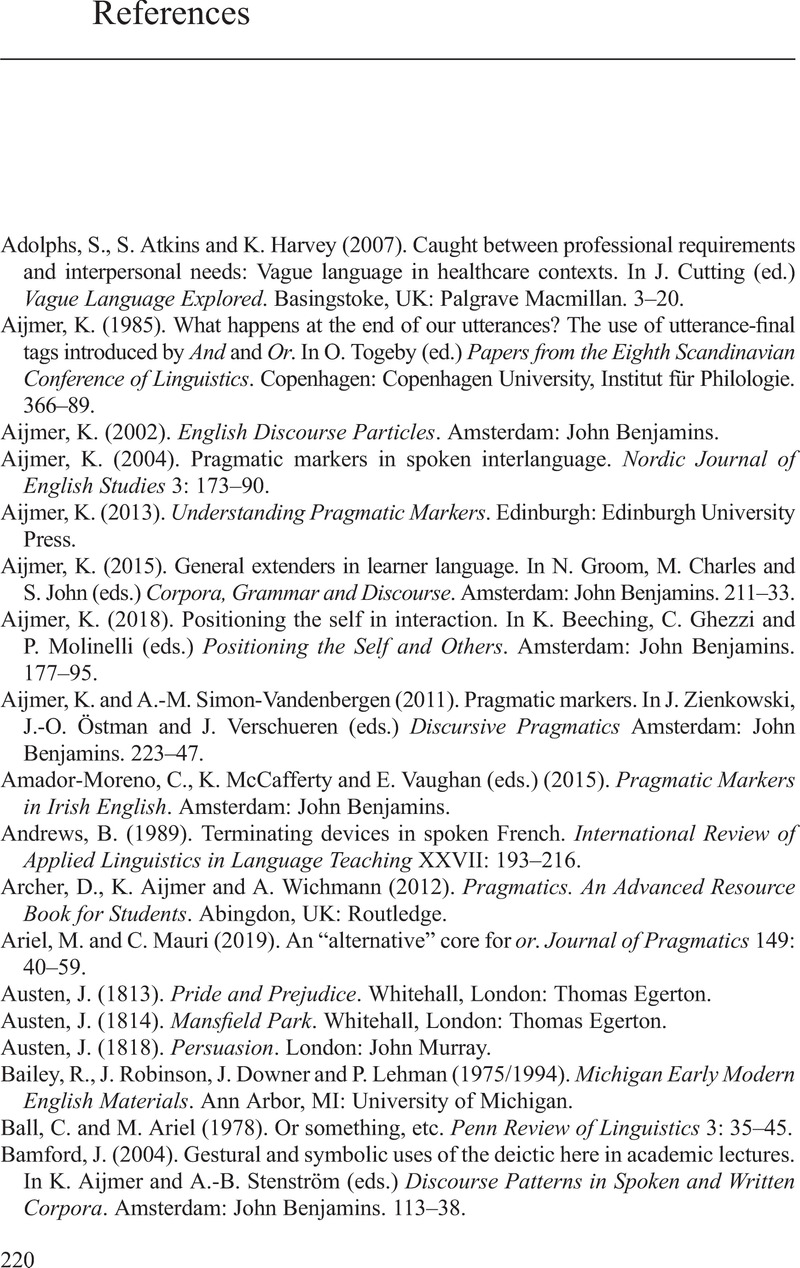Book contents
- General Extenders
- General Extenders
- Copyright page
- Contents
- Tables
- Acknowledgments
- Abbreviations
- 1 Introduction
- 2 Referential Function and Categorization
- 3 Interpersonal Function and Intersubjectivity
- 4 Personal Function and Subjectivity
- 5 Textual Function and Turn Construction
- 6 Historical Development and Change
- 7 Social Marking and Variation
- 8 In Different Languages
- 9 In Learner Language and Language Teaching
- 10 Reflections and Projections
- Notes
- References
- Index
- References
References
Published online by Cambridge University Press: 20 August 2021
- General Extenders
- General Extenders
- Copyright page
- Contents
- Tables
- Acknowledgments
- Abbreviations
- 1 Introduction
- 2 Referential Function and Categorization
- 3 Interpersonal Function and Intersubjectivity
- 4 Personal Function and Subjectivity
- 5 Textual Function and Turn Construction
- 6 Historical Development and Change
- 7 Social Marking and Variation
- 8 In Different Languages
- 9 In Learner Language and Language Teaching
- 10 Reflections and Projections
- Notes
- References
- Index
- References
Summary

- Type
- Chapter
- Information
- General ExtendersThe Forms and Functions of a New Linguistic Category, pp. 220 - 234Publisher: Cambridge University PressPrint publication year: 2021



